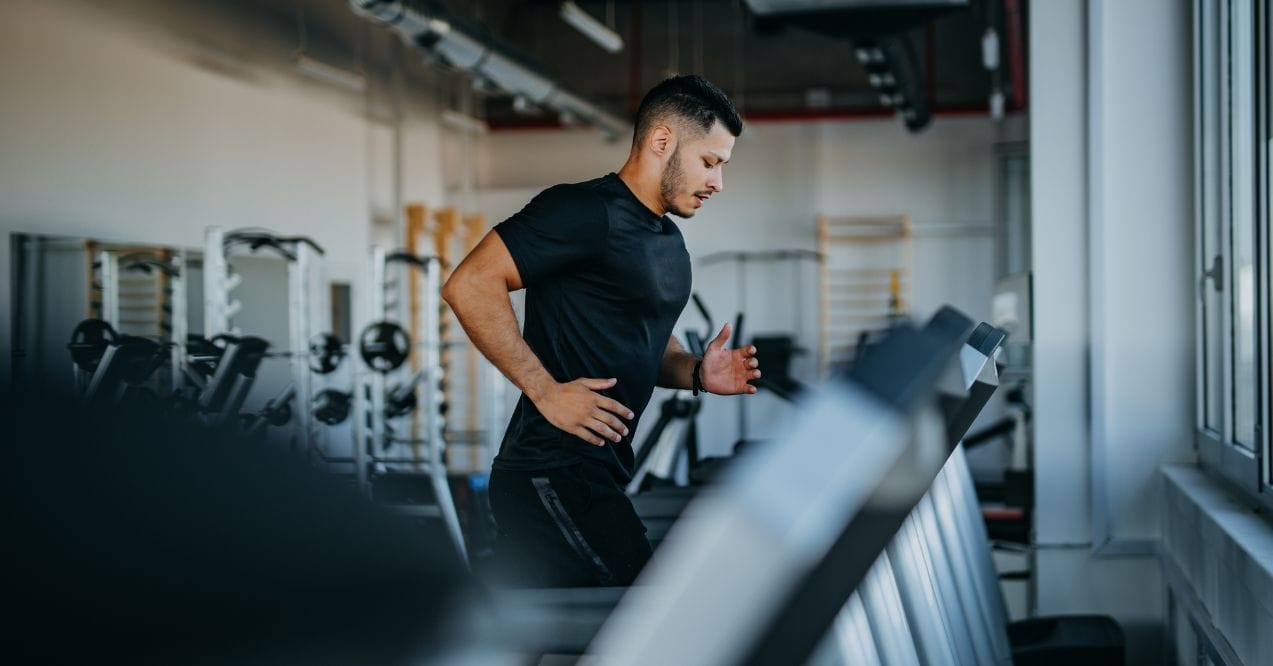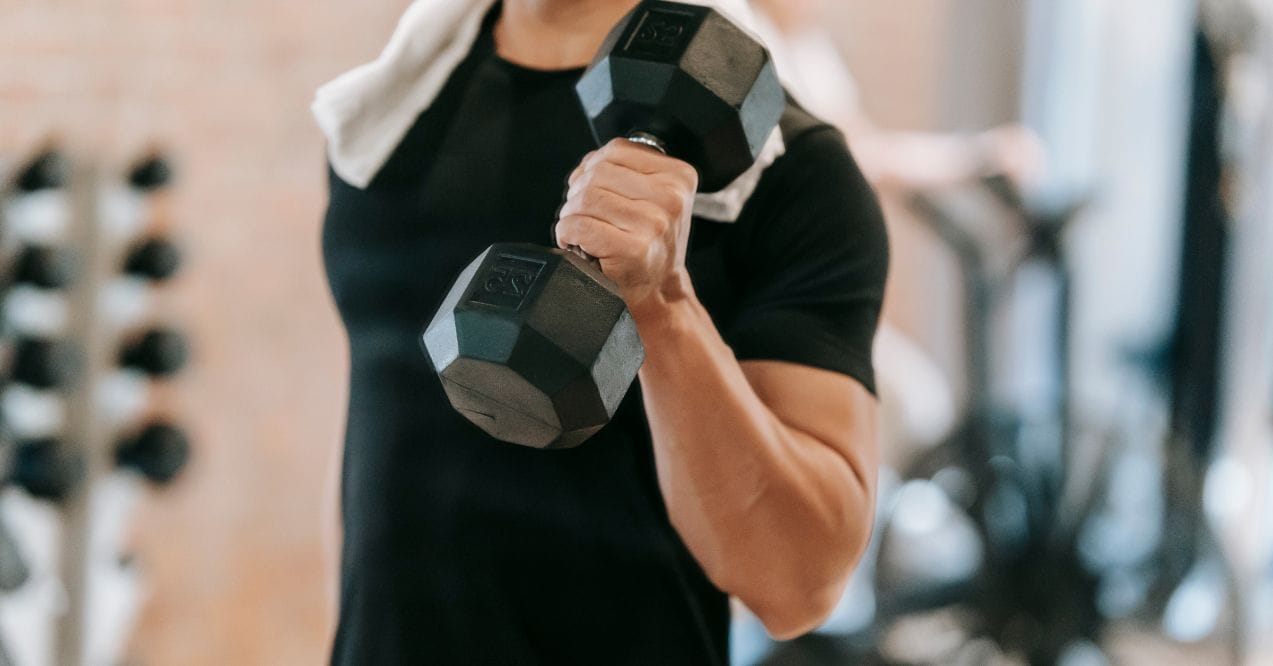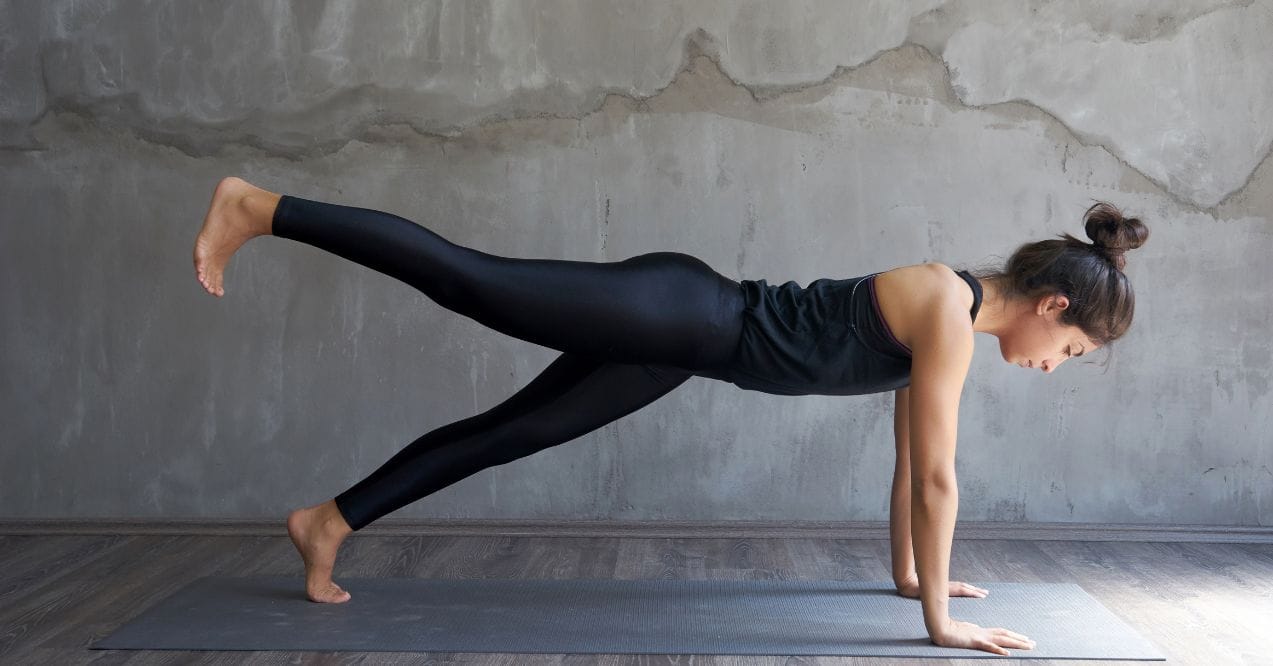Somatic Pilates for Better Body Awareness and Flexibility
In today’s fast-paced world, finding exercise that connects mind and body has become increasingly valuable. Somatic Pilates offers a refreshing approach to movement that enhances body awareness while promoting flexibility and muscular balance. This mindful practice has gained popularity for its ability to alleviate discomfort and support overall physical wellbeing.
Unlike conventional fitness routines, a somatic workout plan focuses on conscious movement patterns that help you reconnect with your body’s natural intelligence. By integrating somatic principles with traditional Pilates techniques, practitioners often experience improved posture, enhanced mobility, and a greater sense of physical freedom.
What Is Somatic Pilates?
Somatic Pilates represents a powerful fusion of two complementary movement disciplines: somatic education and classical Pilates methodology. At its core, this approach emphasizes internal awareness and conscious control of the body through gentle, deliberate movements.
The somatic component focuses on proprioception – the internal sensing of your body’s position and movement. Rather than viewing exercise as something done to the body, somatic work invites you to experience movement from within. This internal focus helps release chronic tension patterns that may restrict mobility and contribute to discomfort.
Traditional Pilates principles of core stability, precision, and controlled breathing are then integrated with this heightened body awareness. The result is a practice that not only strengthens muscles but also reprograms movement patterns for greater efficiency and ease.
Some of the best somatic exercises in this practice include:
- Gentle spinal articulations that promote vertebral mobility
- Breathing techniques that engage the deep core musculature
- Slow, mindful movements that enhance neural pathways
- Floor-based sequences that support proper skeletal alignment
What distinguishes Somatic Pilates from other fitness approaches is its emphasis on quality over quantity. Rather than counting repetitions or pushing through discomfort, practitioners learn to move with intelligence and sensitivity. This mindful approach makes it accessible for people of various fitness levels while still offering profound benefits for even the most advanced movement enthusiasts.
By teaching the nervous system to release unnecessary tension, Somatic Pilates supports improved posture, enhanced breathing capacity, and more efficient movement patterns in daily life.
Key Benefits of Somatic Pilates
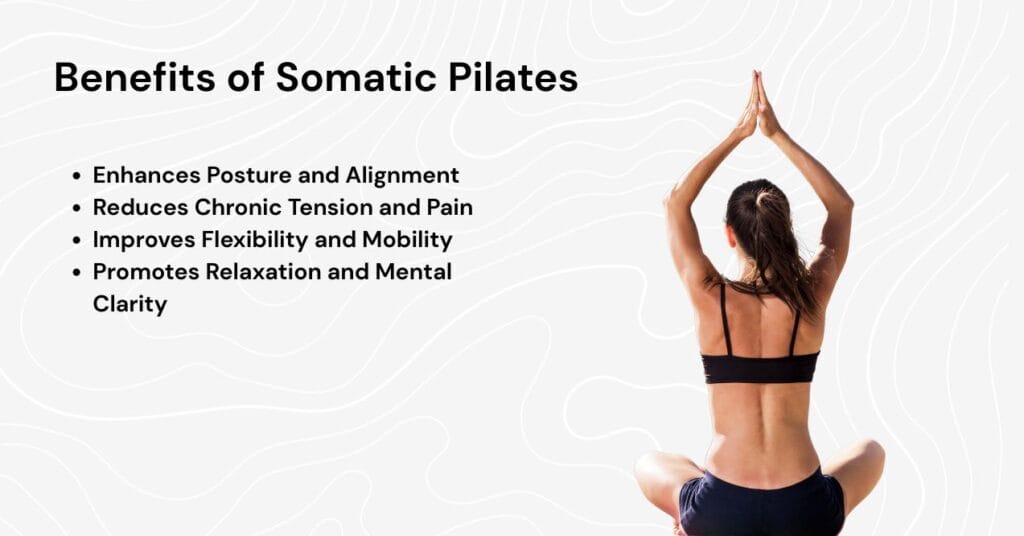
Somatic Pilates offers a unique combination of physical and mental benefits that extend well beyond the exercise session itself. By fostering deep internal awareness, this practice creates lasting positive changes in how you move and feel.
Enhances Posture and Alignment
Poor posture often stems from unconscious movement patterns developed over time. Somatic stretching techniques address these patterns by reeducating the nervous system and releasing chronically tight muscles that pull the body out of alignment.
- Activates deep postural muscles often neglected in conventional exercise
- Builds balanced strength around the spine and major joints
- Creates greater awareness of subtle postural habits
- Establishes more efficient movement patterns that support natural alignment
The result is not just temporary postural improvement during exercise but a fundamental shift in how you carry yourself throughout daily activities.
Reduces Chronic Tension and Pain
Many people experience persistent muscle tension that conventional stretching cannot resolve. Somatic pilates exercises specifically target this neuromuscular tension through gentle movements that reset the resting tone of affected muscles.
These exercises work by communicating directly with the sensory-motor system, teaching chronically contracted muscles to release. By improving this mind-body communication, Somatic Pilates helps alleviate physical discomfort and supports the body’s natural capacity for self-regulation.
Improves Flexibility and Mobility
Unlike passive stretching that temporarily extends muscle fibers, Somatic Pilates creates sustainable flexibility by addressing the nervous system’s role in muscle contraction. This approach allows for:
- Greater range of motion without forcing or straining
- More fluid, coordinated movement sequences
- Improved joint mobility and stability
- Enhanced proprioception and kinesthetic awareness
Promotes Relaxation and Mental Clarity
A somatic pilates workout engages the mind as much as the body, creating a meditative movement experience that promotes mental wellbeing. The focused attention required during practice helps:
- Reduce mental chatter and promote present-moment awareness
- Activate the parasympathetic nervous system for improved relaxation
- Enhance body-mind integration for greater emotional regulation
- Develop increased concentration and mental focus
How It Differs from Traditional Pilates
While both approaches share fundamental principles, somatic pilates distinguishes itself in several important ways from its traditional counterpart. Understanding these differences helps practitioners appreciate the unique benefits of each method.
Traditional Pilates typically emphasizes precise execution of standardized exercises with specific alignment cues and repetition counts. In contrast, somatic work prioritizes the internal experience and sensory feedback over external form. This shift in focus creates a more personalized and responsive practice.
Key differences include:
- Pace and Rhythm – Somatic Pilates movements are performed more slowly, allowing time to sense subtle internal signals and make micro-adjustments. Traditional Pilates often maintains a more consistent, flowing tempo.
- Customization – Rather than following a fixed sequence, somatic work adapts to individual body patterns and needs. The practice evolves based on how your body responds in each moment.
- Learning Approach – Traditional Pilates often teaches through demonstration and external correction. Somatic methods emphasize self-discovery and internal sensing to guide movement refinement.
- Effort Level – While traditional Pilates may encourage working to productive fatigue, somatic approaches prioritize ease and efficiency, often finding strength through releasing unnecessary tension.
- Intention – The primary goal shifts from mastering specific exercises to developing heightened kinesthetic awareness that transfers to all movement contexts.
How to Get Started with Somatic Pilates
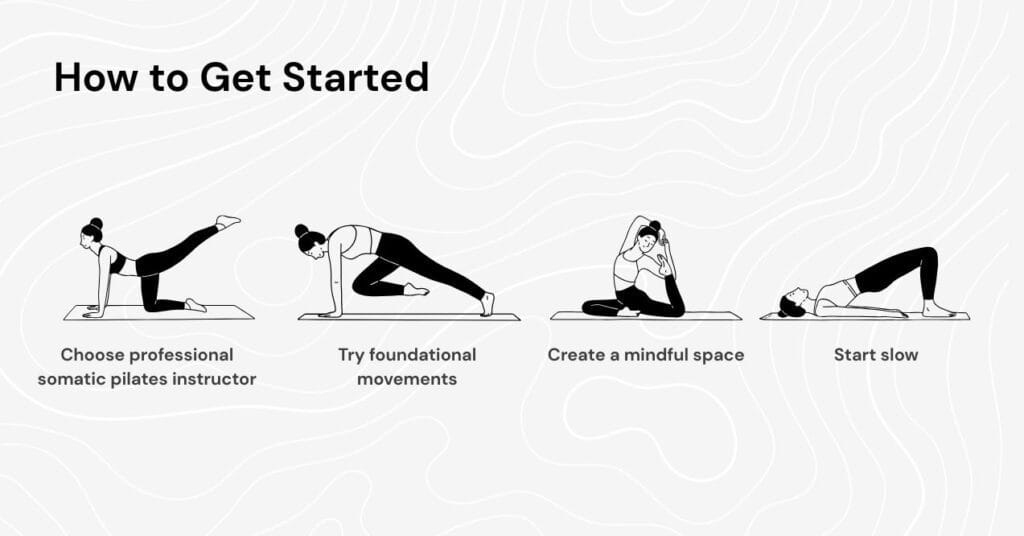
Embarking on a Somatic Pilates journey offers numerous benefits for body awareness and physical wellbeing. While many seek somatic pilates for weight loss, its true value lies in creating sustainable movement patterns that support overall health and metabolism through improved body function. Here’s how to begin your practice effectively.
Choose a Certified Somatic Pilates Instructor
Finding qualified guidance is crucial when starting any new movement practice. A certified instructor brings:
- In-depth understanding of somatic principles and safe progression
- Ability to observe subtle movement patterns unique to your body
- Skills to provide appropriate verbal cues rather than hands-on adjustments
- Knowledge to modify exercises for your specific needs
Try Foundational Movements at Home
Between formal sessions, simple explorations can help develop somatic awareness:
- Conscious Breathing – Lie comfortably on your back with knees bent. Place one hand on your chest and the other on your abdomen. Notice your natural breathing pattern without trying to change it. Gradually allow your breath to deepen, feeling the subtle movements throughout your torso.
- Gentle Spinal Waves – On hands and knees, alternately arch and round your spine while focusing on the sensation of each vertebra moving. Progress slowly, noticing which areas feel fluid and which feel restricted.
Supporting your body’s connective tissues is essential when establishing a movement routine. Bone broth supplements provide nutritional support with 20 grams of clean protein per serving that can complement your somatic practice. The collagen and amino acids in this chocolate-flavored supplement help maintain joint comfort and support tissue resilience.
As you develop body awareness through somatic movement, quality nutrition becomes another way to honor your body’s needs, providing the building blocks for tissue maintenance and recovery throughout your movement journey.
Create a Mindful Space
Your environment significantly impacts your ability to sense subtle internal cues:
- Choose a quiet location with minimal distractions
- Use a comfortable mat that provides adequate cushioning
- Wear clothing that allows free movement without restriction
- Consider soft, natural lighting that promotes relaxation
Start Slow and Focus on Sensation
The essence of somatic work is developing sensory awareness rather than achieving external goals:
- Begin with shorter sessions (15-20 minutes) to maintain quality attention
- Focus on how movements feel rather than how they look
- Notice differences between your right and left sides
- Embrace curiosity about your body’s responses rather than judging them
Conclusion
Somatic pilates represents a powerful approach to movement that bridges the gap between mind and body awareness. By combining the strength-building principles of traditional Pilates with the neurological repatterning of somatic education, this practice offers a comprehensive path to improved physical wellbeing. The benefits extend far beyond the exercise session – enhancing posture, alleviating tension, increasing mobility, and promoting mental clarity in everyday life.
Whether you’re seeking to address specific physical challenges or simply deepen your connection to your body’s innate wisdom, somatic work provides valuable tools for sustainable movement health. Begin with simple awareness practices, find qualified guidance, and discover how this mindful approach can transform your relationship with movement.
Somatic Pilates can effectively improve body awareness, posture, and movement quality. Research supports that mindful movement practices enhance proprioception, release muscle tension, and promote better coordination, making it a valuable approach for many individuals.
Somatic Pilates emphasizes internal sensation and nervous system repatterning, while traditional Pilates focuses on precise exercise execution. Somatic work moves slower, prioritizes self-discovery over external form, and adapts to individual needs rather than following standardized sequences.
Somatic Pilates supports healthy metabolism through improved movement efficiency and body function. While not designed primarily for weight management, it complements other physical activities by enhancing body awareness, reducing movement compensation patterns, and promoting overall physical wellbeing.
Advertisement. This site offers health, wellness, fitness and nutritional information and is designed for educational purposes only. You should not rely on this information as a substitute for, nor does it replace, professional medical advice, diagnosis, or treatment. If you have any concerns or questions about your health, you should always consult with a physician or other health-care professional. Do not disregard, avoid or delay obtaining medical or health related advice from your health-care professional because of something you may have read on this site. The use of any information provided on this site is solely at your own risk.


